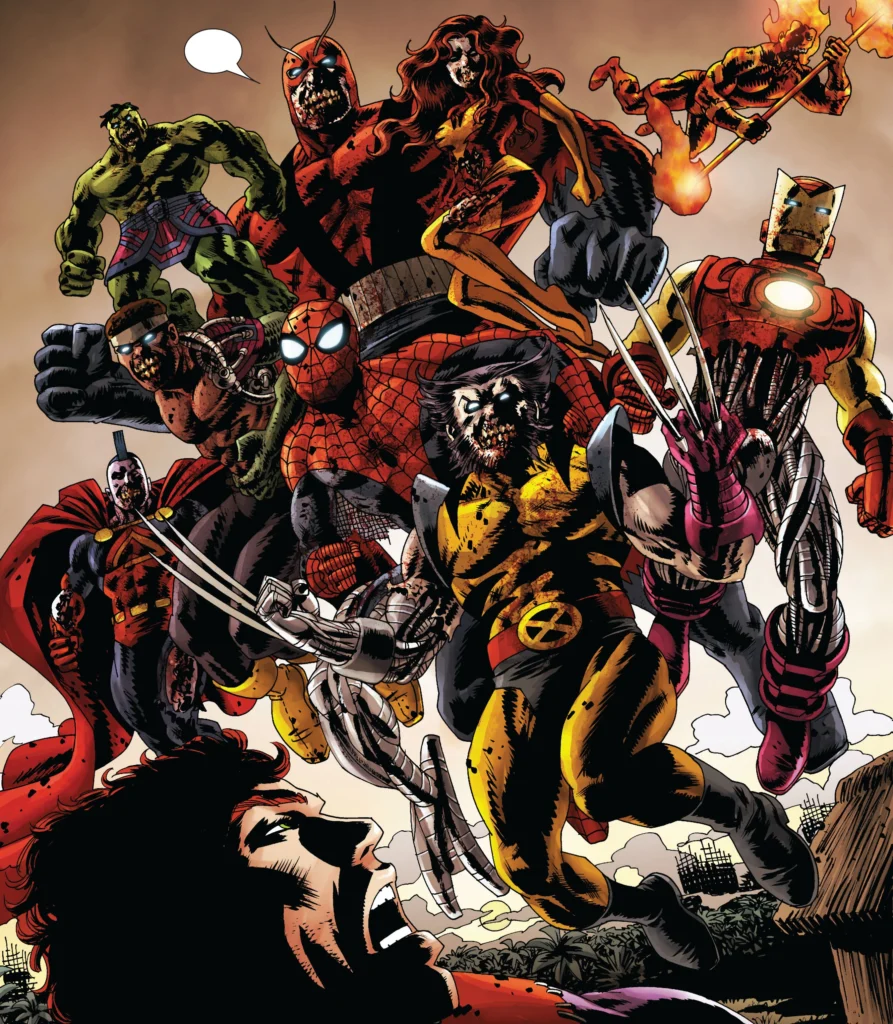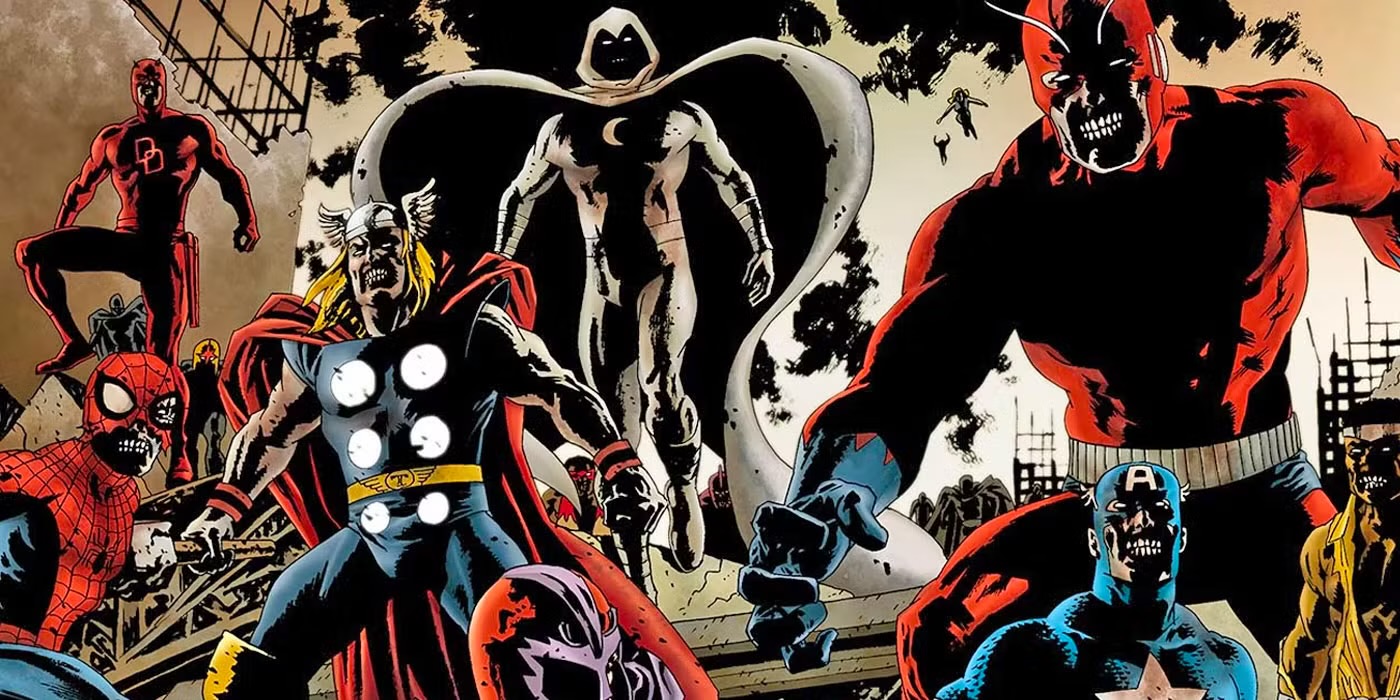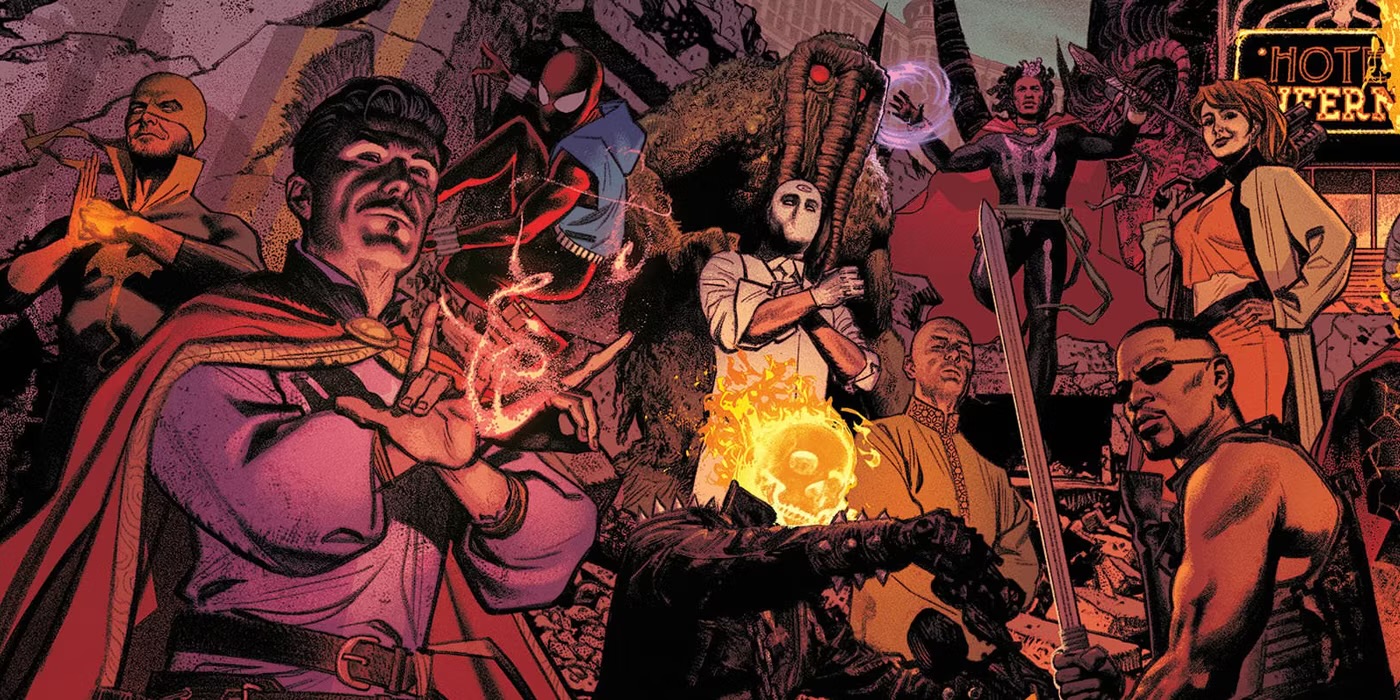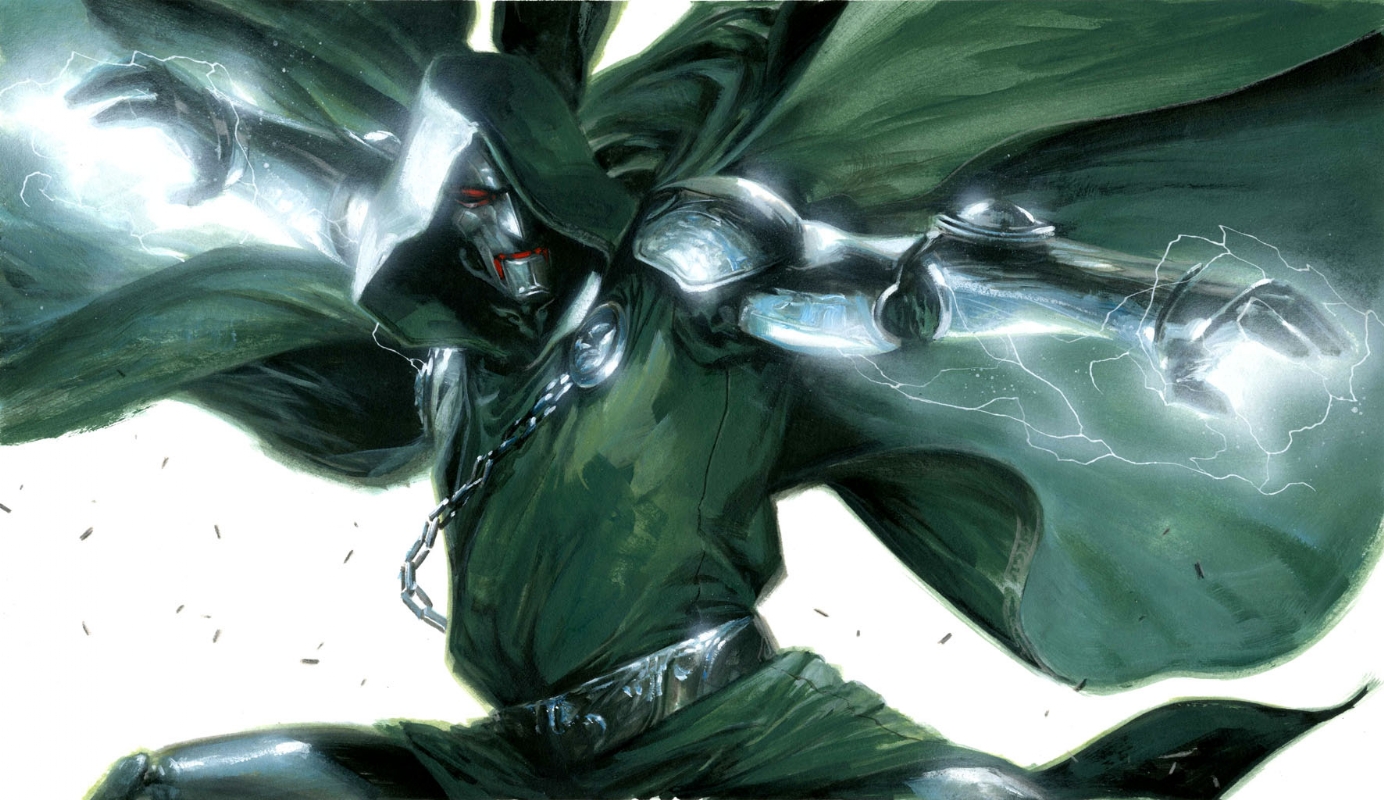When Marvel Zombies was first introduced, it was an unexpected twist that took the Marvel Universe in a direction few had imagined. The series blended the superhero genre with horror, creating a bizarre alternate reality where Marvel’s beloved heroes were transformed into flesh-eating zombies. Written by Robert Kirkman, known for his work on The Walking Dead, and featuring artwork by Sean Phillips, the story rapidly became a hit. Beyond its gruesome and creative reimagining of Marvel characters, Marvel Zombies had a profound impact on Marvel Comics and the wider industry, altering the tone, creativity, and market strategies of comic book storytelling.

The Marvel Zombies concept was first introduced in the pages of Ultimate Fantastic Four in 2005, in a storyline where Reed Richards of Earth-1610 (the Ultimate Universe) accidentally makes contact with the zombified version of himself from an alternate Earth. This alternate reality, later designated Earth-2149, is the origin of Marvel Zombies. The success of the storyline led to a full-fledged miniseries in 2006, where the zombie virus had infected Earth’s mightiest heroes, turning them into mindless, cannibalistic monsters.
The series opens with a twist—many of Marvel’s iconic heroes are already infected. Characters like Spider-Man, Captain America, Iron Man, and Wolverine roam a post-apocalyptic landscape, no longer defenders of humanity, but predators driven by an insatiable hunger. What sets this story apart is the balance between horror and dark humor. These are not typical zombies—they retain their personalities, memories, and intelligence, but are ruled by their need to consume human flesh.
Before Marvel Zombies, the horror genre was relatively underutilized within mainstream superhero comics. Marvel, while known for pushing boundaries in terms of character development and thematic complexity, had not previously ventured far into the zombie genre, which was largely seen as a niche interest. However, Marvel Zombies brought a fresh wave of horror to Marvel’s portfolio, introducing a grotesque, gory narrative that was vastly different from anything seen in superhero comics before.
Robert Kirkman’s storytelling, combined with Sean Phillips’ macabre art style, created a series that felt simultaneously familiar and disturbingly alien. Readers got to witness the terrifying sight of their favorite superheroes behaving in monstrous ways. Spider-Man, wracked with guilt over eating Aunt May and Mary Jane, still searches for his next meal. The formerly noble Captain America (now known as Colonel America) leads other infected heroes in devouring the human population. These kinds of disturbing images left a lasting impression on readers, offering a new perspective on heroism, corruption, and survival.

The success of the series was in part due to its shock value, but also its ability to deconstruct the superhero mythos. It revealed the fragility of even the mightiest heroes when faced with primal instincts, showcasing the terrifying potential of power without morality.
Marvel Zombies became a commercial hit, spawning multiple sequels, spin-offs, and crossovers. The original five-issue miniseries was followed by Marvel Zombies 2, Marvel Zombies 3, and even mash-ups like Marvel Zombies vs. Army of Darkness. The series also inspired merchandise, including action figures, variant comic covers, and even a dedicated Marvel Zombies line of Funko Pop! figures.
The popularity of Marvel Zombies wasn’t confined to just comic book fans; it reached mainstream audiences who were captivated by the unique blend of superheroes and zombies. This was partly due to the zombie craze ignited by Kirkman’s The Walking Dead and the ongoing success of zombie media in general during the mid-2000s. Marvel’s decision to embrace this trend, while incorporating their most popular characters, was a brilliant marketing move that introduced new fans to comic books.
The success of Marvel Zombies had a ripple effect across Marvel’s publishing line. It signaled to Marvel that there was a growing market for darker, more experimental storytelling. It also highlighted the potential of alternate universe stories. While Marvel had dabbled in alternate realities before, Marvel Zombies showed just how far they could take the concept without alienating their fanbase.
This success led to further explorations of alternate realities and “What If?” scenarios. Marvel Zombies effectively expanded Marvel’s multiverse, paving the way for other non-canon stories to flourish. The Marvel Zombies universe became one of the most well-known alternate Earths in the Marvel Multiverse, referenced in later comics and other media, including animated series and video games.

Additionally, the tone and themes explored in Marvel Zombies inspired other horror-tinged Marvel projects. For instance, the Venomverse series and the Darkhold saga tapped into similar themes of corruption and monstrous transformation. The combination of horror with the superhero genre proved to be a winning formula that Marvel would revisit multiple times.
Beyond Marvel’s own publishing strategies, Marvel Zombies influenced the broader comics landscape by showing that superhero comics didn’t always have to be about noble heroism or cosmic battles. The series proved that superhero narratives could be twisted into something completely different—something horrifying, grotesque, and yet still engaging.
This shift is part of a larger trend in the 21st century, where deconstructionist takes on superheroes have gained popularity. Works like Watchmen, The Boys, and Invincible (another series by Robert Kirkman) explore what happens when superheroes go bad, lose their moral compass, or succumb to darker instincts. Marvel Zombies added to this movement by imagining a world where the Marvel heroes’ worst tendencies—hunger, rage, and self-preservation—overpowered their noble qualities.
The legacy of Marvel Zombies extends far beyond the comic book pages. The concept has been referenced in numerous other media, from animated series like Ultimate Spider-Man to video games like Lego Marvel Super Heroes 2. The What If…? animated series on Disney+ even dedicated an entire episode to a zombie-infested Marvel Universe, which was heavily inspired by the Marvel Zombies comic. This episode introduced a new wave of fans to the concept and reignited interest in the original series.
The popularity of Marvel Zombies has also led to speculation about whether it will make a full live-action debut in the Marvel Cinematic Universe (MCU). Given the increasing focus on the multiverse in recent MCU films, it’s entirely possible that we might one day see zombie versions of Iron Man, Captain America, or Spider-Man on the big screen.

Marvel Zombies was more than just a gimmick; it was a creative risk that paid off in a big way. It pushed the boundaries of what superhero stories could be, showing that even the most beloved characters could be reimagined in horrifying ways. The series had a profound impact on Marvel’s approach to storytelling, opening the door for more dark, experimental, and non-canon tales.
While not everyone was a fan of the grim, gory tone, there’s no denying the influence Marvel Zombies had on both Marvel Comics and the broader comic book industry. It tapped into the zeitgeist of the mid-2000s zombie craze and brought something fresh and unexpected to superhero comics. To this day, the series remains a cult favorite, its influence felt in Marvel’s ongoing exploration of alternate realities, multiverse stories, and darker narratives.




